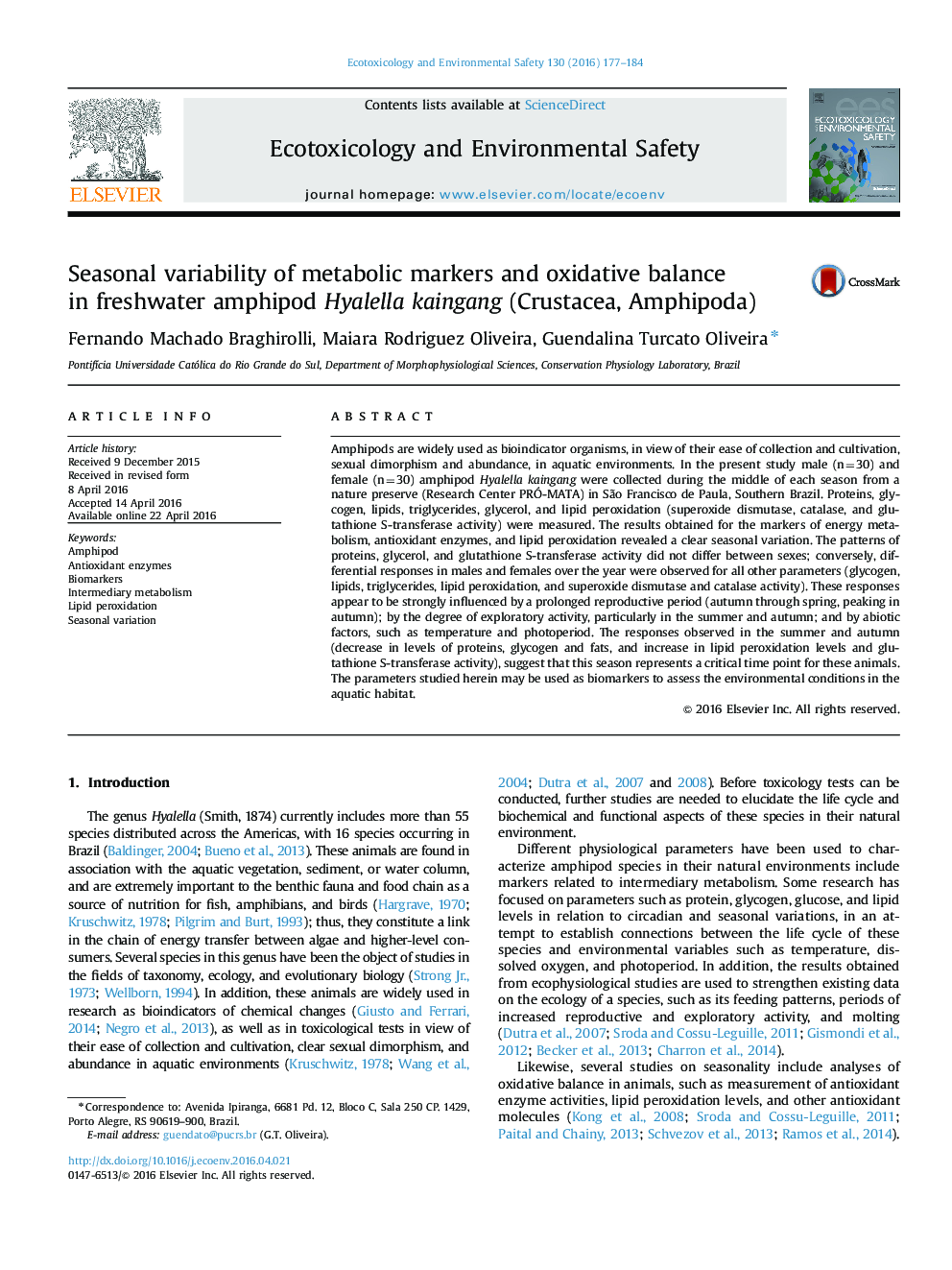| Article ID | Journal | Published Year | Pages | File Type |
|---|---|---|---|---|
| 4419171 | Ecotoxicology and Environmental Safety | 2016 | 8 Pages |
•Hyalella kaingang can be used as bioindicators of aquatic environment.•Energy reserves and oxidative parameters were quantified in males and females.•The results obtained revealed clear seasonal and gender variation.•The summer/autumn period is a critical time point for these Amphipods.
Amphipods are widely used as bioindicator organisms, in view of their ease of collection and cultivation, sexual dimorphism and abundance, in aquatic environments. In the present study male (n=30) and female (n=30) amphipod Hyalella kaingang were collected during the middle of each season from a nature preserve (Research Center PRÓ-MATA) in São Francisco de Paula, Southern Brazil. Proteins, glycogen, lipids, triglycerides, glycerol, and lipid peroxidation (superoxide dismutase, catalase, and glutathione S-transferase activity) were measured. The results obtained for the markers of energy metabolism, antioxidant enzymes, and lipid peroxidation revealed a clear seasonal variation. The patterns of proteins, glycerol, and glutathione S-transferase activity did not differ between sexes; conversely, differential responses in males and females over the year were observed for all other parameters (glycogen, lipids, triglycerides, lipid peroxidation, and superoxide dismutase and catalase activity). These responses appear to be strongly influenced by a prolonged reproductive period (autumn through spring, peaking in autumn); by the degree of exploratory activity, particularly in the summer and autumn; and by abiotic factors, such as temperature and photoperiod. The responses observed in the summer and autumn (decrease in levels of proteins, glycogen and fats, and increase in lipid peroxidation levels and glutathione S-transferase activity), suggest that this season represents a critical time point for these animals. The parameters studied herein may be used as biomarkers to assess the environmental conditions in the aquatic habitat.
